Project details
Skill
Cost
Estimated Time
 Handsaw
Handsaw Block plane
Block plane Bar clamp
Bar clamp Combination square
Combination square Utility knife
Utility knife Forstner bit
Forstner bit Cordless drill/driver
Cordless drill/driver Chisel
Chisel
You don’t have to replace an entire floorboard to fix a small chip or gouge. Instead, patch it with a new piece of wood, as Tom demonstrates here, and heed his advice for getting expert results.
Step 1
Select the Patch Material

Find a scrap of wood of the same species as the flooring—in this case, Tom used a leftover piece of unstained pine flooring.
Step 2
Dutchman Secrets
- Match the grain, not the stain. Choose a patch of the same wood as the flooring, with a similar grain pattern.
- Make the mortise fit the patch, not the other way around. It’s the smart way to get a tight fit.
- Plane a slight bevel into the patch’s bottom edges. The patch will then slide easily into the mortise and still fit tightly.
- Don’t sweat matching the floor stain. You can get the patch color to be close, but a perfect match? Not likely!
Shown: Tom Silva explains how to select a patch that will blend in with the existing wood grain.
Inset: The new patch fits seamlessly in the floor.
Step 3
Cut a Patch to Rough Size
On the scrap, locate a portion that’s wider and longer than the damaged area and has a similar grain. Cut out a strip with a handsaw, as shown, and remove the saw marks with a block plane.
Step 4
Rip and Plane to Final Thickness
Mark a cutline down the middle of the patch edge, and make a rip cut along that mark, as shown. Smooth the cut face with a block plane. Trim one end square, then, holding it vertically, sand the end on 180-grit paper laid flat on the workbench. Check the end for squareness with a combination square.
Step 5
Mark the Mortise

With the patch placed alongside the damaged area, mark its length so that it’s a bit longer than the damage. Crosscut the patch at this mark, and square up the end as in Step 4. Now hold the patch firmly over the damage and score the floor around it with a utility knife.
Step 6
Cut the Mortise
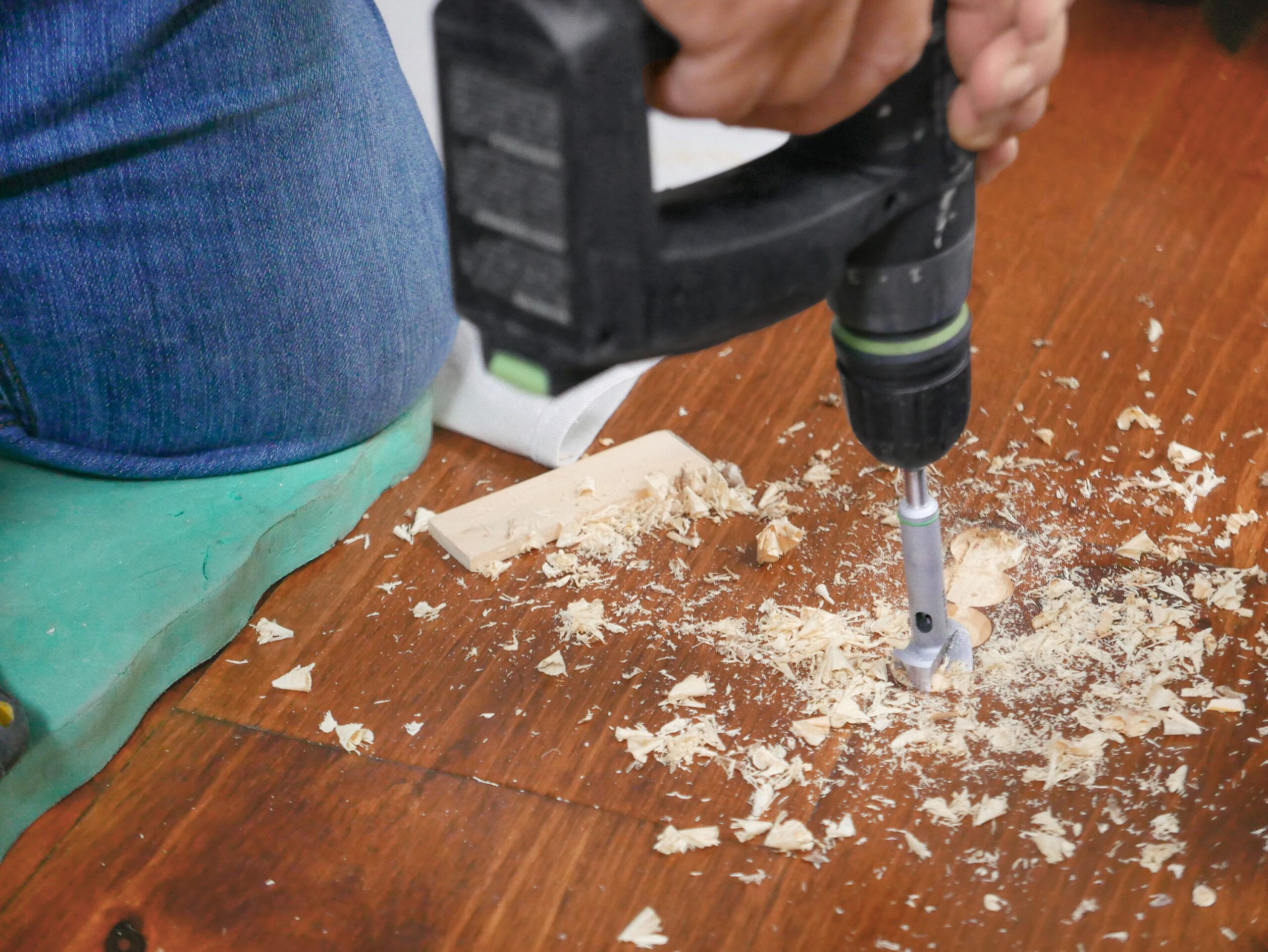
Using a Forstner bit slightly narrower than the patch, drill a series of -inch-deep overlapping, flat-bottomed holes within the score lines. Square the edges of the mortise with a chisel, then check that the patch fits and sits flush with the surrounding floor.
Step 7
Stain the Patch
To ensure an even stain on soft or porous woods like pine or maple, wipe on a wood conditioner like Pre-Stain. Let the conditioner dry for about 15 minutes, then apply an oil-based stain and check its color next to the floor. If too dark, wipe it with paint thinner. If too light, apply a second coat after the first one dries.
Step 8
Glue the Patch in Place
When the stain is dry, cover the mortise’s sides and bottom with wood glue. Press the patch into the mortise, and use a damp rag to wipe up any glue that squeezes out. After the glue dries, mask around the patch and apply two coats of polyurethane to match the rest of the floor.
